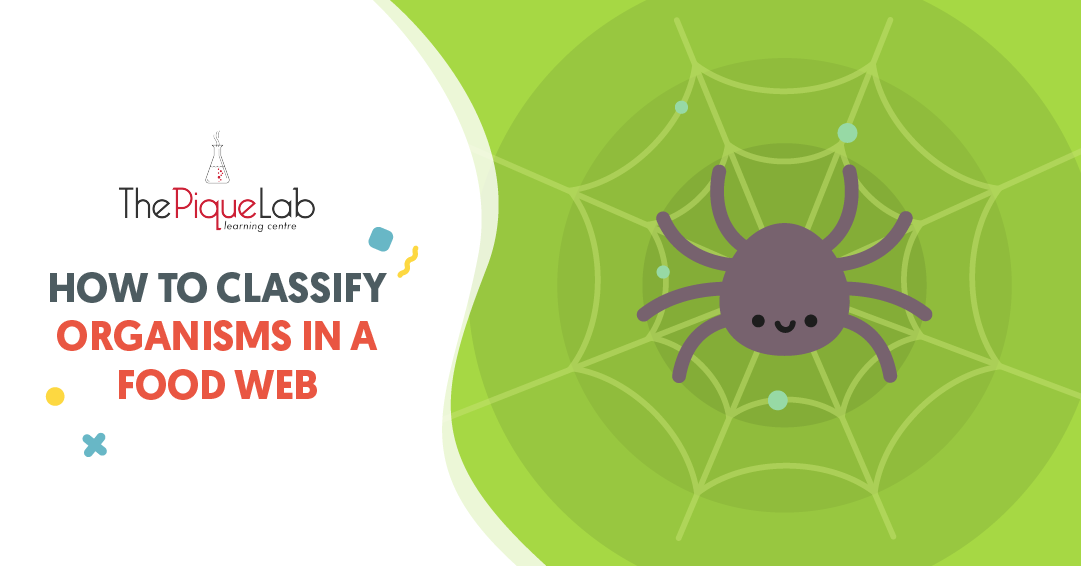In our previous article, we have discussed how organisms can be interdependent. In today’s article on Web of Life, let us explore the different roles that different organisms can play in a food web.
Classifying Organisms In A Food Web
There are a total of 3 ways we can classify organisms in a food web:
Group 1
- Food Producer
- An organism that has the ability to produce its own food. Plants are food producers as their leaves have chloroplasts, which contain chlorophyll to trap sunlight in the process of photosynthesis to make their own food.
- Food Consumer
- An organism that is unable to produce its own food and has to feed on other organisms for food to survive. Some examples of food consumers are horses, tigers, and humans.
Group 2
- Herbivore
- An animal that feeds on plants only
- Carnivore
- An animal that feeds on other animals (meat) only
- Omnivore
- An animal that feeds on both plants and animals (meat)
Group 3
- Prey
- An animal that is hunted, captured and eaten by other animals only. As it does not feed on other animals, it feeds only on food producers.
- Predator
- An animal that hunts and eats other organisms only
- Prey and Predator
- An animal that hunts organisms but is also being hunted by other animals
In summary,

Read Also:
With all this information, let us now explore some application questions that test students on their ability to understand and identify the roles of the organisms in a food web.
Question 1

Thought Process
Step 1: Identify the food producer.
A food producer will only be eaten by other organisms and does not feed on other organisms as it is able to make its own food. Thus, a unique characteristic that a food producer will exhibit in a food web is that all the arrows will be pointing away from it.
Organism B is the food producer.
Step 2: Identify the herbivore
A herbivore will only eat the food producer. Thus, it will only have an arrow pointing from the food producer to it.
Organism C is the herbivore.
Step 3: Identify the omnivore.
An omnivore feeds on the food producer and other animals. Thus, it will have at least one arrow pointing from the food producer and another arrow pointing from another organism to itself.
Organism D is the omnivore.
Step 4: Identify the carnivore
A carnivore only feeds on other organisms and does not feed on the food producer. Thus, it should have at least one arrow pointing from other organisms to itself.
Organism A is the carnivore.
Hence, the answer is Option (1).
Question 2

Thought Process
Step 1: Identify the food producer.
- Once again, look for the organism that has all the arrows pointing away from it.
- Organism C is the food producer.
Step 2: Identify the predator
- A predator only hunts and feeds on other organisms (not food producers) and is not eaten by any organisms. Thus, it should have at least one arrow pointing from other organisms to itself and no arrows pointing away from it.
- D feeds on B, which is not a food producer.
- Organism D is the predator (of B).
Step 3: Identify the prey.
- A prey is hunted and eaten by other organisms. Thus, it will have at least one arrow pointing away from itself and no arrows pointing to itself other than the arrow from the food producer.
- A feeds only on C (food producer) and is hunted by B.
- Organism A is the prey (of B).
Step 4: Identify the prey and predator
- A prey and predator hunts some organisms but is also hunted by other organisms. Thus, it will have arrows pointing away from it and arrows pointing to it (excluding the arrow from the food producer).
- B eats A and is eaten by D.
- Organism B is the prey (of D) and predator (of A).
Hence, the answer is Option (1).

If you like our methodology, we've some upcoming workshops:







